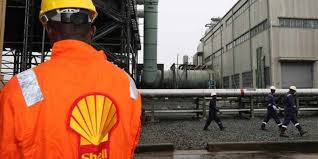Oil & Energy
Global Energy Advisory: What Does 2018 Hold For Oil Markets?
Oil prices look to be ending the year on a high with WTI breaking $60 on Friday morning and Brent climbing towards the $67 mark. Analysts are now looking towards the New Year, with opinion divided on whether oil markets can maintain this upwards momentum.
Oil prices are set to close out the year up more than 11 percent, hitting their highest level since 2015. However, the road to higher prices was rocky. In the first half of the year, the OPEC cuts appeared to have little effect, and oil prices gyrated. But the cuts started to take a large bite out of inventories in the third quarter and the price rally ensued. Other notable developments included the return of geopolitics as a market mover, with outages in Libya, Iraq, the North Sea and Canada all contributing to higher prices. U.S. shale also came roaring back in 2017, and those production gains are expected to continue into next year. Looking forward, there is disagreement among market analysts about where prices go from here. Some view oil as overpriced, with a price correction looming. Others see oil prices grinding higher as 2018 wears on due to falling inventories.
U.S. oil production unexpectedly falls. The EIA reported a drop in U.S. oil production, with last week’s output falling by 35,000 bpd. Also, crude inventories fell by a robust 4.6 million barrels for the week ending on December 22, although gasoline inventories ticked up again. The dip in oil production could very well be a one-off anomaly, but the report added some bullish momentum to oil on the final trading day of the year. WTI hovered at the $60-per-barrel mark with a few hours left in 2017.
Barclays: Oil set for price correction. Barclay’s analysts argue that oil prices are due for a correction, citing several reasons that point to a coming downturn. Investors are overstretched with bullish bets on oil futures, exposing the market to a snap back in the other direction. Also, China’s economy is expected to slow in 2018, raising the risk of weaker-than-expected demand. Plus, oil supply is rising in the U.S., Brazil and Canada, among other countries. Inventories could start to build again in 2018, slowing the rate of rebalancing. Barclays notes that there are plenty of reasons why their forecast could be wrong, but they predict lower prices in the near-term.
Trump could kill Iran nuclear deal in January. President Trump faces a series of deadlines in January that offer him the opportunity to tear up the 2015 nuclear deal with Iran. Every three months the President has to recertify the agreement, and Trump will have that decision before him again in about two weeks. “[I]n the event we are not able to reach a solution working with Congress and our allies, then the agreement will be terminated,” Trump said in October. The President could restore sanctions on Iran, which could lead to an escalation of conflict. Politico reports that Trump’s top national security team opposes such a move and hopes to convince the President not to go down that road.
Trump scrapping fracking rule. The Trump administration is rolling back Obama-era rules on hydraulic fracturing on public lands. The 2015 proposed rules had not yet taken effect, and were delayed by a Wyoming court. They would have required the disclosure of chemicals used in fracking and also set standards on well design. The oil and gas industry applauded the decision to scrap them.
Cold weather boosts coal and natural gas prices. The rate of coal burning in U.S. power plants hit a three-year high as the eastern half of the country found itself in a deep freeze. Coal temporarily reclaimed the top spot among power sources in the U.S., a position it held for decades until natural gas overtook it a few years ago. Coal and natural gas prices are up on higher demand for heating, with regional price spikes particularly acute. New England saw a spot gas price surge to $35/MMBtu. The development could add a bit of momentum to the Energy Department’s proposal to offer support for coal and nuclear power. Still, it should be noted that Henry Hub prices, while up a bit, remained below $3/MMBtu. The price spike is confined to areas in the northeast, and in any event, natural gas production is expected to continue to rise.
Explosion at Venezuelan refinery. Reuters reported that an explosion hit a unit at Venezuela’s largest refining complex, injuring two workers. The incident highlights the deteriorating state of Venezuela’s oil assets, as state-owned PDVSA lacks the cash to keep up with maintenance.
Libya pipeline explosion. An explosion hit a Libyan pipeline earlier this week, knocking about 70,000 to 100,000 bpd offline. The incident provided a lift to oil prices, and it also highlights the risk to supply from some unstable countries. Libya managed to restore output to about 1 mb/d this year after several years of producing only a fraction of that amount.
Russia looks to shale. Russia is starting to look at its shale potential, and large reserves are thought to be located in the Bazhenov shale in Western Siberia. In fact, it is thought to be the largest shale formation in the world. Up until now, Russia has relied on conventional sources, but Russian companies are starting to move into shale. “The Bazhenov is a huge prize,” says Alexei Vashkevich, Gazprom Neft’s exploration director, according to the WSJ. Output from Russia’s shale is not expected before the mid-2020s, but it could be crucial to offsetting declines from mature oil fields.
In our Numbers Report, we take a look at some of the most important metrics and indicators in the world of energy from the past week. Find out more by clicking here.
Thanks for reading and we’ll see you next week.
Tom Kool
Oil & Energy
Nigeria Loses More Crude Oil Than Some OPEC Members – Nwoko

Nigeria’s losses due to crude oil theft has been said to be more significant than those of some other members of the Organisation of Petroleum Exporting Countries(OPEC).
The Chairman, Senate Ad- hoc Committee on Crude Oil Theft, Senator Ned Nwoko, made this known in an interview with newsmen in Abuja.
Nwoko noted with dismay the detrimental impact of the issue, which, he said include economic damage, environmental destruction, and its impact on host communities.
According to him, the theft was not only weakening the Naira, but also depriving the nation of vital revenue needed for infrastructure, healthcare, education and social development.
The Senator representing Delta North Senatorial District described the scale of the theft as staggering, with reports indicating losses of over 200,000 barrels per day.
Nwoko disclosed that the ad hoc committee on Crude Oil Theft, which he chairs, recently had a two-day public hearing on the rampant theft of crude oil through illegal bunkering, pipeline vandalism, and the systemic gaps in the regulation and surveillance of the nation’s petroleum resources.
According to him, the public hearing was a pivotal step in addressing one of the most pressing challenges facing the nation.
‘’Nigeria loses billions of dollars annually to crude oil theft. This is severely undermining our economy, weakening the Naira and depriving the nation of vital revenue needed for infrastructure, healthcare, education, and social development.
‘’The scale of this theft is staggering, with reports indicating losses of over 200,000 barrels per day more than some OPEC member nations produce.
‘’This criminal enterprise fuels corruption, funds illegal activities and devastates our environment through spills and pollution.
‘’The public hearing was not just another talk shop; it was a decisive platform to uncover the root causes of crude oil theft, bunkering and pipeline vandalism.
‘’It was a platform to evaluate the effectiveness of existing surveillance, monitoring, and enforcement mechanisms; Identify regulatory and legislative gaps that enable these crimes to thrive.
‘’It was also to engage stakeholders, security agencies, host communities, oil companies, regulators, and experts to proffer actionable solutions; and strengthen legal frameworks to ensure stricter penalties and more efficient prosecution of offenders”, he said.
Nwoko noted that Nigeria’s survival depended
Oil & Energy
Tap Into Offshore Oil, Gas Opportunities, SNEPCO Urges Companies

Shell Nigeria Exploration and Production Company Ltd. (SNEPCo) has called on Nigerian companies to position themselves strategically to take full advantage of the growing opportunities in upcoming offshore and shallow water oil and gas projects.
The Managing Director, SNEPCO, Ronald Adams, made the call at the 5th Nigerian Oil and Gas Opportunity Fair (NOGOF) Conference, held in Yenagoa, Bayelsa State, last Thursday.
Adams highlighted the major projects, including Bonga Southwest Aparo, Bonga North, and the Bonga Main Life Extension, as key areas where Nigerian businesses can grow their capacity and increase their involvement.
“Shell Nigeria Exploration and Production Company Ltd. (SNEPCo) says Nigerian companies have a lot to benefit if they are prepared to take advantage of more opportunities in its offshore and shallow water oil and gas projects.
“Projects such as Bonga Southwest Aparo, Bonga North and Bonga Main Life Extension could grow Nigerian businesses and improve their expertise if they applied themselves seriously to executing higher value contracts”, Adams stated.
Adams noted that SNEPCo pioneered Nigeria’s deepwater oil exploration with the Bonga development and has since played a key role in growing local industry capacity.
He emphasized that Nigerian businesses could expand in key areas like logistics, drilling, and the construction of vital equipment such as subsea systems, mooring units, and gas processing facilities.
The SNEPCO boss explained that since production began at the Bonga field in 2005, SNEPCo has worked closely with Nigerian contractors to build systems and develop a skilled workforce capable of delivering projects safely, on time, and within budget both in Nigeria and across West Africa.
According to him, this long-term support has enabled local firms to take on key roles in managing the Bonga Floating, Production, Storage and Offloading (FPSO) vessel, which reached a major milestone by producing its one-billion barrel of oil on February 3, 2023.
Oil & Energy
Administrator Assures Community Of Improved Power Supply

The Emohua Local Government Area Administrator, Franklin Ajinwo, has pledged to improve electricity distribution in Oduoha Ogbakiri and its environs.
Ajinwo made the pledge recently while playing host in a courtesy visit to the Oduoha Ogbakiri Wezina Council of Chiefs, in his office in Rumuakunde.
He stated that arrangements are underway to enhance available power, reduce frequent outages, and promote steady electricity supply.
The move, he said, was aimed at boosting small and medium-scale businesses in the area.
“The essence of power is not just to have light at night. It’s for those who can use it to enhance their businesses”, he said.
The Administrator, who commended the peaceful nature of Ogbakiri people, urged the Chiefs to continue in promoting peace and stability, saying “meaningful development can only thrive in a peaceful environment”.
He also charged the Chiefs to protect existing infrastructure while promising to address the challenges faced by the community.
Earlier, the Oduoha Ogbakiri Wezina Council of Chiefs, led by HRH Eze Goodluck Mekwa Eleni Ekenta XV, expressed gratitude to the Administrator over his appointment and pledged their support to his administration.
The chiefs highlighted challenges facing the community to include incessant power outage, need for new transformers, and the completion of Community Secondary School, Oduoha.
The visit underscored the community’s expectations from the LGA administration.
With Ajinwo’s assurance of enhancing electricity distribution and promoting development, the people of Oduoha Ogbakiri said they look forward to a brighter future.
By: King Onunwor
-
News1 day ago
Tinubu Never Stopped 5-year Visa For U S. Citizens – Presidency ?
-

 Featured1 day ago
Featured1 day agoINEC To Unveil New Party Registration Portal As Applications Hit 129
-
Business1 day ago
Industry Leaders Defend Local Content, … Rally Behind NCDMB
-
Sports1 day ago
Nigerian Athletes Serving Doping Bans
-

 Niger Delta1 day ago
Niger Delta1 day agoC’River Focused On Youth Empowerment – Commissioner
-
News1 day ago
UN Warns Floods May Unleash Toxic Chemicals, Pose Risk To Elderly, Ecosystems
-
Rivers1 day ago
NSE Members Tasked On National Dev
-
Business1 day ago
NCDMB Promises Oil Industry Synergy With Safety Boots Firm

